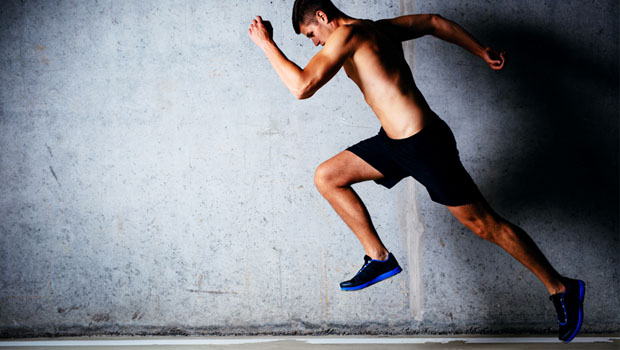How to Safely Go Beast-Mode in Your Type 1 Workout

We asked professional field hockey player Tim Atkins to share how he balances Type 1 diabetes with his training regimen. Here’s what he had to say:
Nutrition plays an extremely important role in performance for all elite athletes, and more so for athletes with diabetes. The major source of fuel for active muscles is carbohydrates, which gets stored in the muscles days before exercise. What you eat after exercise also can help or hinder your athletic performance.
Athletes build their nutrition plans around competition and training times. What you eat before exercise often depends upon your personal preference, but this should be tailored around the intensity and the length of exercise. Most of the time training for a sport or playing in a game will lower your blood glucose levels, so it’s important to know how to manage this before, during, and after a workout.
Pre-workout
You need to make sure you have consumed enough of the right kinds of foods on the day of a competition or training to have the fuel needed to perform. It’s also critical that you allow enough time for these energy sources to be digested. For a regular athlete this will generally take around 2 to 4 hours, depending upon what you’ve eaten and how much.
For athletes with diabetes, this is where things get complex. You have to match the right amount of insulin with the right amount of exercise to make use of the fuel without going low. When looking to perform intense exercise, athletes with diabetes often look to leave pre-exercise blood sugar levels slightly higher than normal to avoid the risk of hypoglycemia.
Many health care experts advise people with diabetes to reduce their insulin intake before vigorous exercise. However, this can reduce the amount of energy that reaches the muscles in very intense workouts, thus potentially reducing the effectiveness and ability to compete at the highest level. Personally, I try to keep my pre-workout insulin intake as normal as possible leading up to exercise. Blood sugars can then be raised in the 30 minutes before exercise with Energy Gels. In practice, this means increasing the amount of blood tests you do prior to an event, because beginning to exert yourself with a too-low blood glucose level is dangerous.
Workout
Similar rules apply for nutrition during exercise. The carbohydrates taken in during exercise provide a fuel source for the brain to maintain skills and decision-making capabilities, and reduce the feeling of fatigue. Again the quantity of carbohydrates required will depend on exercise intensity and the amount of energy stored in the muscles at the start of the event. While it’s different for every athlete, a good starting point is about 50g of easy-to-consume carbohydrate foods for every hour of exercise.
As a general rule, I would suggest that diabetic athletes keep eating as they exercise, as overeating on carbs and having to correct is a far more suitable situation than running the risk of going low during exercise.
Some points to consider on carb consumption during an event:
- The longer the event, the greater the amount of carbohydrates required. As an overall rule of thumb, if the workout runs for over 30 minutes, you need to replenish carbohydrate levels (in addition to fluids).
- Higher intensity exercise will burn more glycogen. Fuel stores will replenish more quickly during your game or training session, so make sure to keep an eye on this.
- Temperature may lower sugar levels. The hotter it is, the quicker glycogen will be used.
- Pre-exercise eating has a big impact on glycogen storage. The better an athlete’s pre-exercise meal is, the higher the stores of carbohydrate will be, and hence the more fuel that will be available for conversion during that event or session.
- Account for adrenaline. Adrenaline can have a big effect on blood glucose levels. It’s normal to run higher at the start of a competition because of the hormone. So just make sure you factor that into your diabetes management plan.
- There is no one-size-fits-all strategy here. What works for one athlete and gives them a good supply of glucose may make another’s stomach turn, so learn this while training and test new things.
- Stay hydrated. Dehydration is a threat for any athlete. You need to keep drinking plenty of water even after you’ve finished working out. Not only will dehydration make you sick, but it may also make your blood glucose levels spike.
Post-workout
Because you’ve used a lot of your body’s stored glucose, you need to replenish it. That means eating enough carbs after a big workout to keep blood glucose from dipping. Even after moderate-intensity activity, it’s important to be careful for hours afterward. For people with Type 1 diabetes, blood glucose levels can drop even 48 hours post-exercise.
Remember that everyone is different and finding the right nutrition regimen to support your training is all about trial and error. Be prepared to test yourself as much as you can, and work with the consequences to treat yourself.
Thanks for reading this Insulin Nation article. Want more Type 1 news? Subscribe here.
Have Type 2 diabetes or know someone who does? Try Type 2 Nation, our sister publication.